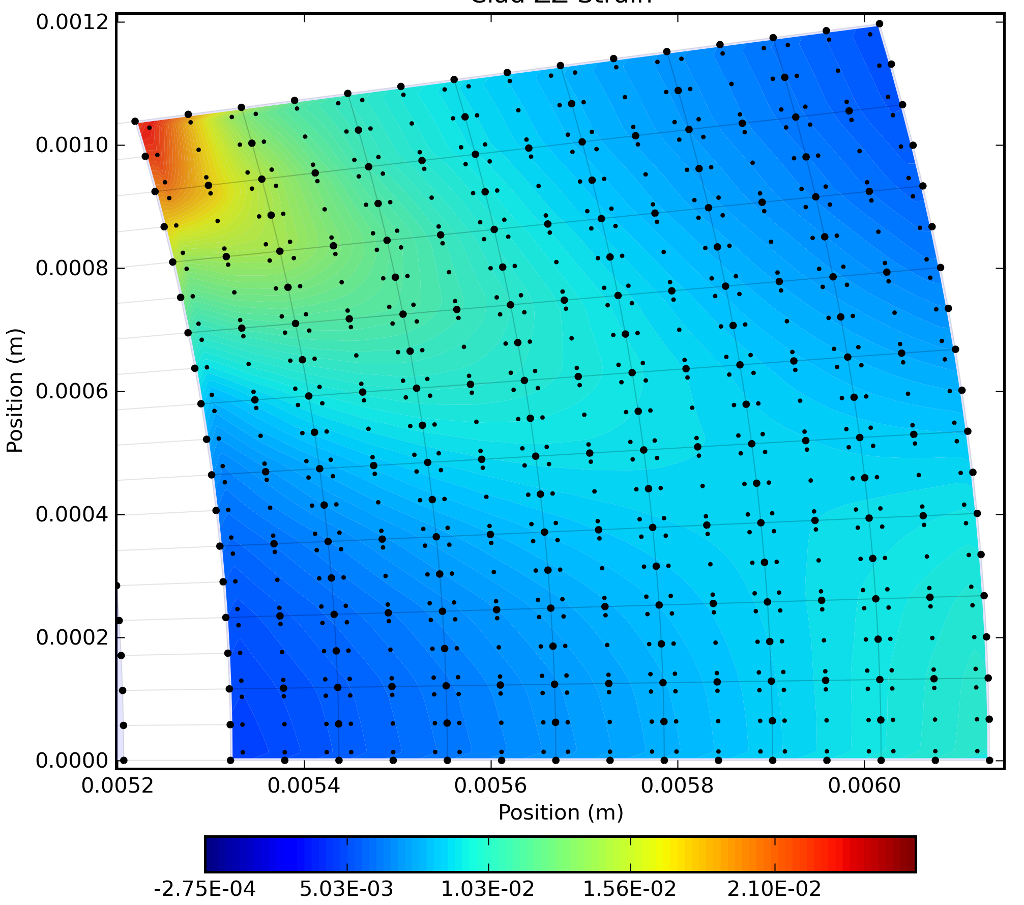Hello all,
This may be a difficult post to respond to in the whole, but any
pointers would be appreciated.
My overall goal is to generate contour plots for a wide range of input
data. The data points are not regularly spaced and do not align to
any grid. The data points represent measurements taken from a model
that can take on a variety of shapes. To make matters more difficult,
I'd prefer not to interpolate around corners of the model.
For example ( please forgive the ascii art ):
-----------------------|
. . . . . . . .|
. . . . . . . .|
----------------| . . .|
>. .|
>. . .|
>------|
In the model above the edges denoted by "|" and "-", data points
denoted by ".". This is a simple L shape with random data points
sampled.
For the most part, the approaches I've taken have worked, but I am
hitting some difficult conditions to debug. Most unnerving are some
artifacts in the plot even though the data values are fairly uniform
(see attached image "fail.png" ).
The general approach I'm taking goes as follows:
1 ) Make a linear space for the x and y components of the data and the
model ( def_points_x is unique and sorted sorted in the code example
):
# model boundary points x
x_def = linspace( def_points_x[0], def_points_x[-1],
self.num_points_x ) # do something similar for x and y of data and
model points
2) Triangulate on the points
try:
ltri = delaunay.Triangulation( array( xPoints ), array(
yPoints ) ) # xPoints and yPoints are data points
except:
ltri = ( None, None, None )
3) use the natural neighbor extrapolator
if extrapolate:
# extrapolate
try:
interp_extrap = ltri.nn_extrapolator( region_values )
# values for the data points in same order ( i.e., ( xPoints[1],
yPoints[1] ) -> region_values[1] )
except:
return ( None, None, None)
4) extrapolate to the model boundary
x2,y2 = meshgrid( x_def, y_def ) # model boundary region
z = interp_extrap( x2, y2 )
5) plot the result
contourf( x_def, y_def, z, linspace( minValue, maxValue,
self.numberOfContourLevels ), zorder = 50, extend = 'both' )
I've attached two images, one showing a nice result and one showing artifacts.
Am I completely off base in this approach, hence I cannot seem to
"perfect" the results? Suggestions?
Thanks for reading!
-Erik

